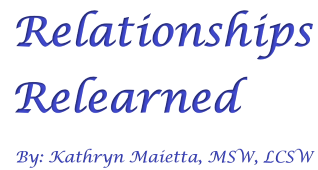Responses to Real or Perceived Threats
Fear. Stress. Worry. Anxiety. These four words describe responses to real or perceived threats. Even though they are frequently interchanged, each word means something a little different.
Understanding each of the four emotions, and what action to take when you are feeling one of these four emotions, is important. Your actions or reactions affect not only you, but those people who are around you, too.
In a day and age where you are constantly bombarded with threats you must:
- recognize what are real, perceived, or hyped threats
- know how to prioritize what is a threat to you, and
- understand what you need to do to eliminate or reduce the impact of any threats
What is a Real, Perceived, or Hyped Threat?
Picture you are out hiking in the woods by yourself. It is a beautiful, warm summer day. There is a light breeze. The birds are chirping. Life is good. You walk around a bend in the path, and you are confronted by a HUGE bear and her two cubs! She clearly sees you. Yikes!! It is likely that 10 out of 10 people would consider this a threat!! It is real. Managing this threat RIGHT NOW is your priority. You raise your hands above your head and wave them around. And you start making A LOT of noise. She, and her two cubs, amble away. Threat eliminated.
Oh, if life were only that simple.
Today, real, perceived, and hyped threats are everywhere. All day, every day. You probably get your real time information about the world from family, friends, TV, a streaming service, social media or a multitude of other sources.
The overt or outward reason for this information sharing is to increase the knowledge of the person receiving the information.
The covert or hidden reason for this information sharing is to sway you to their opinion or product. It isn’t like a big box store, beer company or narcissistic politician, actor or influencer is concerned about YOUR wellbeing. No, their information is disseminated to manipulate your thoughts, persuade you to buy their product, or make the politician, actor, or influencer more relevant.
There are many real, perceived, and hyped threats in the world. There are even threats that are real, but hyped and there are only perceived that are hyped. Everyone has their own agenda for promoting a threat. Ideally, you can discard the hype and determine for yourself what is a real or perceived threat. In alphabetical order, the following are some examples of threats making the news lately:
- Abortion
- Agism, racism, sexism, transgenderism
- Climate change
- Covid: vaccines / pandemic
- Crime
- Drugs: addiction / overdoses
- Homelessness
- Immigration
- Inflation
- Politics: presidential elections
- Wars: Israel-Hamas / Ukraine-Russia
Using this list as an example, what may be a real or perceived threat is in the eye of the beholder and how much s/he can be influenced by the disseminating source. A three-minute news story about the threat of homelessness will give you a different perspective than having a homeless encampment on the sidewalk in front of your once thriving, now abandoned, family restaurant.
BEAR (example)!!!!
You are having a quiet afternoon sitting in your recliner watching a movie when you hear an unfamiliar noise, a potential threat, in the backyard. Your responses to the threat might include:
- You look out a back window and see a bear walking across your yard! The bear is a legitimate threat resulting in fear. You check to make sure the back door and the windows are closed and locked. Then, you go back to watching your movie.
- You look out a back window and see what you think is a bear disappearing into the woods. This causes stress. Seeing your garbage can on its side, you make a mental note to secure the garbage more securely. You go back to your movie.
- You pause your movie and listen intently from your recliner. You start worrying about all the bad things that could be in the backyard. Eventually you go to a back window and peek out. Seeing nothing, you return to watching your movie.
- You pause your movie. Your mind starts racing. Despite not seeing anything out your back window, your anxiety continues to spiral out of control. You can no longer focus on your movie and go find something else to do to distract you.
Maybe these words – fear, stress, worry, anxiety – are not interchangeable after all.
Fear
Fear is usually considered an unpleasant emotion. The focus of fear is the perception of danger, pain, or harm. It is about anticipation, what you think might happen, for example, impending doom. It can also result from an awareness of danger. Fear can result from a perceived threat of being in a situation or perceived threat from a person.
In the bear example, there is a legitimate threat, a bear in your backyard. You do what you can to neutralize the threat. You make sure your doors and windows are closed and locked. Once you have done your due diligence, the threat is over. You can relax. You go back to enjoying your movie.
The key to understanding fear is that there is something legitimate to make you feel the way you do. And you address the threat and it is eliminated. It is over.
Stress
Stress occurs when there is a reaction to an external triggering event or situation. The event or situation could involve problems with money, work, your significant other, a social issue, etc. Stress is about a situation being experienced. It can be real or perceived, based on the information you have at the time. For example, you have no hard evidence your significant other is cheating, but your intuition (perception) says it is real.
In the bear example, a noise and a shadow going into the woods are legitimate. Once you observe a garbage can knocked over, you can assume your sighting really was a bear and that better securing your garbage might prevent the bear from returning. There is a solution to your stress. You can relax and go back to enjoying your movie.
The key to understanding stress is that there is something causing the stress. Address the threat and it can be eliminated. It is over.
The book, Crush Your Stress: 302 Skills for Coping with Stress, may be helpful if you are experiencing overwhelming stress in your life.
Worry
Worry occurs when there is uncertainty about if a threat is real or perceived. It can be a premonition or the possibility something unpleasant is about to happen. Doubt and uncertainty run rampant. Worry feels like making a mountain out of a molehill, or making something small and insignificant much bigger and of more importance than realistic. It is all in your mind.
In the bear example, hearing an unfamiliar noise in your backyard (an event) occurs and without logical thought, your mind starts spinning about the “what ifs”. What if it is a burglar? What if it is a tree limb breaking off and crashing down on your house? What if it is a bear? If you are in worry mode, it doesn’t occur to you it could be nothing but the wind blowing a branch against the house.
With worry, you can work through your heightened awareness. Once you gather more information you are able to let go of your worry and continue on with life. With some effort, the threat is eliminated. It is over.
Anxiety
Anxiety is a normal part of life. It brings about a heightened awareness of real or perceived danger. There are strong feelings of wanting a situation or event to pass quickly, for there to be a resolution. Anxiety feels like a very heavy burden to bear and is a very unpleasant place to be! Both the present and the future feel very precarious! At the same time, anxiety can feel both “normal” and irrational. What is “the truth”?
In the bear example, you hear an unfamiliar sound in the backyard. Then, when you don’t hear it again, you doubt yourself. And you mind starts spinning, bobbing and weaving. You think, “Did I really hear something, or was it my imagination?”, “Should I go look to see if something is out there?”, “What would I do if I saw something?” Spin. Spin. Spin. Because you don’t feel like you can sort out the real or perceived threat, you don’t feel safe looking in the backyard or focusing on your movie.
One of the important factors with anxiety is that the unpleasant feeling lingers long after the event is over. In the bear example, if you never looked out the back window to see if the perceived threat was real, it will be difficult to let it go and move along. It is hard for your anxiety to evaporate if the anxious event only occurred in your head.
The Effect of Fear, Stress, Worry and Anxiety
In life there are ongoing real and perceived threats. Your ability to thrive in life will be based on your ability to be objective in your assessment of the threat. The focus is on YOU. Not the influence of others.
For much of the last three years this country and the world has been focused on covid, vaccines and lockdowns. You couldn’t listen to the news, talk with anyone, or stroll through town without hearing the latest, ever-changing perspective of one person or another.
For many people they felt fear. Questions about who to trust came down to making decisions with their doctor.
Everyone was stressed. There was this stressor thing, covid, and there were so many perspectives being screamed about how to go on living life. People died. People lost their jobs. Families were separated for the holidays. Some businesses stayed open and were considered essential, while others closed and never recovered.
People worried about themselves, family and friends. They did what they could do about the real and perceived threat. They stayed home. Some worked from home. People avoided going out into the public. They wore masks.
For others, their anxiety went through the roof. There was so much misinformation that people who tended to feel anxious about life events anyway became paralyzed. Who do you believe? Information that was disseminated began with covid being a perceived threat, then it was a real threat, then it wasn’t, then it became the ultimate threat with people dying.
Summary
How you manage the fallout from a real or perceived threat is entirely up to you. Determining how you view the threat will be important when determining your plan of action to address your fear, stress, worry and anxiety.
As the wars in Ukraine and Israel drag on, homelessness gets addressed by clearing out San Francisco streets for a visit from President Xi of China, just like you would for “any guest coming over for dinner”, and we are on a collision course of a presidential election in November 2024, there will be many opportunities for practicing skills for managing both real and perceived threats.
With warmest regards,
Thank you so much for reading this blog. If you enjoyed the content, please check out other blogs at:
https://relationshipsrelearned.com/my-blog/
https://rvingnomads.com/blog/
In addition to blogs and articles, I have written a series of self-help books. To view these books, please go to my Amazon Authors Page or go to the books tab at the top of this page.
To be notified of future posts, please enter your email address and click on the Subscribe button.
| AI has not been used to create any content for my website, articles, blogs or books. All material is original unless otherwise noted. All photos and graphics within my website and blogs were taken or created by David Harrington or Kathryn Maietta. |












